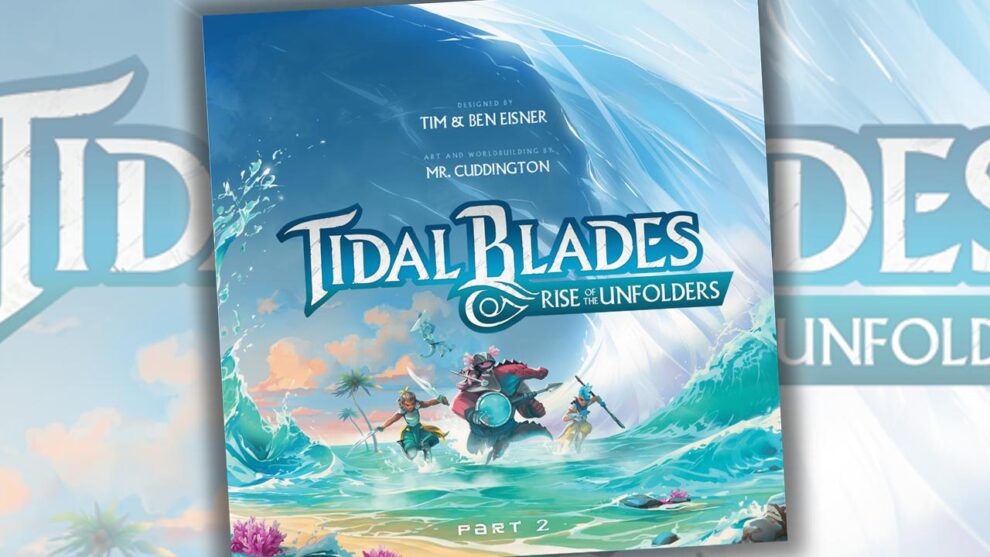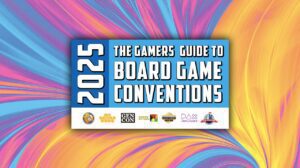Disclosure: Meeple Mountain received a free copy of this product in exchange for an honest, unbiased review. This review is not intended to be an endorsement.
You never know what you’re going to get with a Tidal Blades release. Unlike Pandemic, Undaunted, or MicroMacro, to name but a few, Tidal Blades isn’t a shorthand for a certain type of mechanical experience. Teach a man to Pandemic, and he can Pandemic for life, but previous experience with any one Tidal Blades title won’t do you much good when you move on to the next.
Like the Roll Player series and Valeria, Tidal Blades is a world, a setting in which various designers can manage their mischief. Tidal Blades: Heroes of the Reef was a massive worker placement game. Tidal Blades: Banner Festival was a strange little trick-taking game. And now we have Tidal Blades 2: Rise of the Unfolders, an absolutely enormous dungeon crawling campaign game.
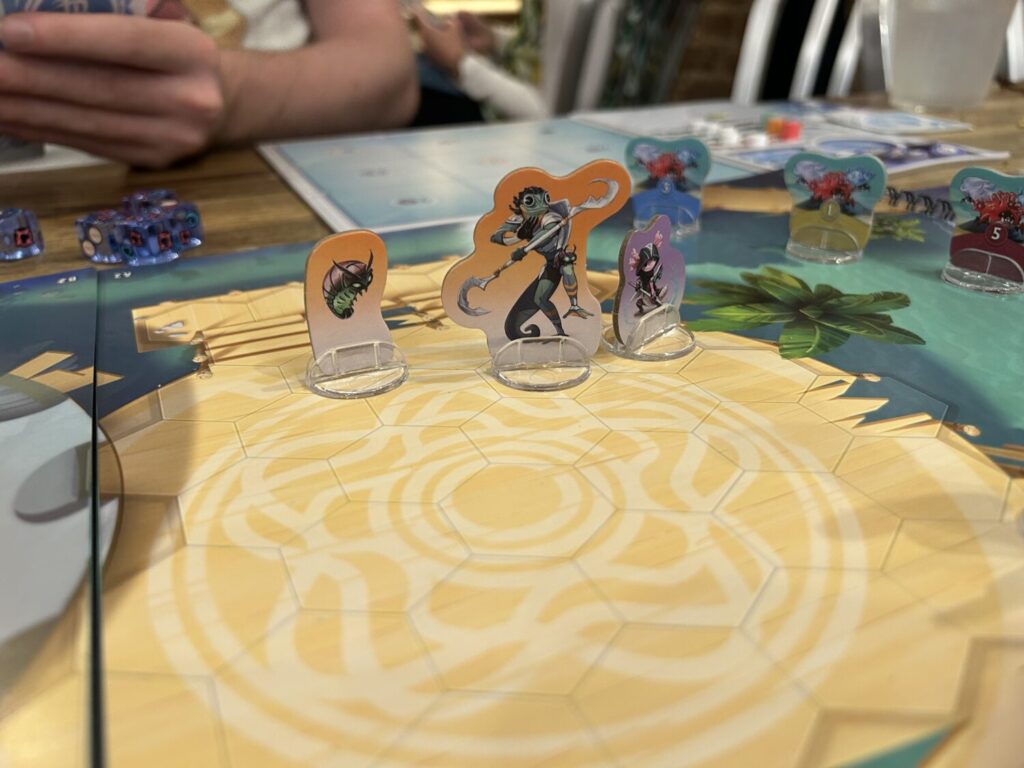
Our Wettest Franchise
All of Tidal Blades takes place in Naviri, an Edenic city by the sea. While the aesthetics of Naviri bring to mind tropical paradises, cool breezes, and considerations of coconuts, all is not as it seems. Naviri is beset on all sides by unspeakable horrors, sea monsters or worse, held at bay by a frozen expanse of space and time called the Fold.
You and your party have just joined the Tidal Blades, the elite guard tasked with the protection of Naviri, and you are immediately informed that the Fold is on the struggle bus. Well. “Informed.” Monster tentacles burst through the floor of the ceremonial platform on which you were just inducted. You aren’t informed so much as you urgently discover..
To disclose more of the story would give the game away, so I won’t do that. I will tell you that Tidal Blades 2 has better-than-average game writing, with a perfect balance between character and brevity. Unlike the narrative installments of Aeon’s End, for example, you never find yourself wishing the narrative portions would hurry up so you can get to the good stuff. They’re enjoyable in their own right.
The mechanics are nice and clean, making use of the far-more-intimidating-sounding-than-it-is Nexus Grid. Every turn, you play a card to any open space on your grid, then activate that card’s row or column. Using the Nexus Grid, you get to do a mix of actions every turn. You might move, fight, or gain resources. Part of the reason the system is so cool is that it allows for nuanced future planning without overly burdening the player. If I’m going to need to reach a certain goal halfway across the board two rounds from now, I can make sure I’m setting up my cards to make that possible.
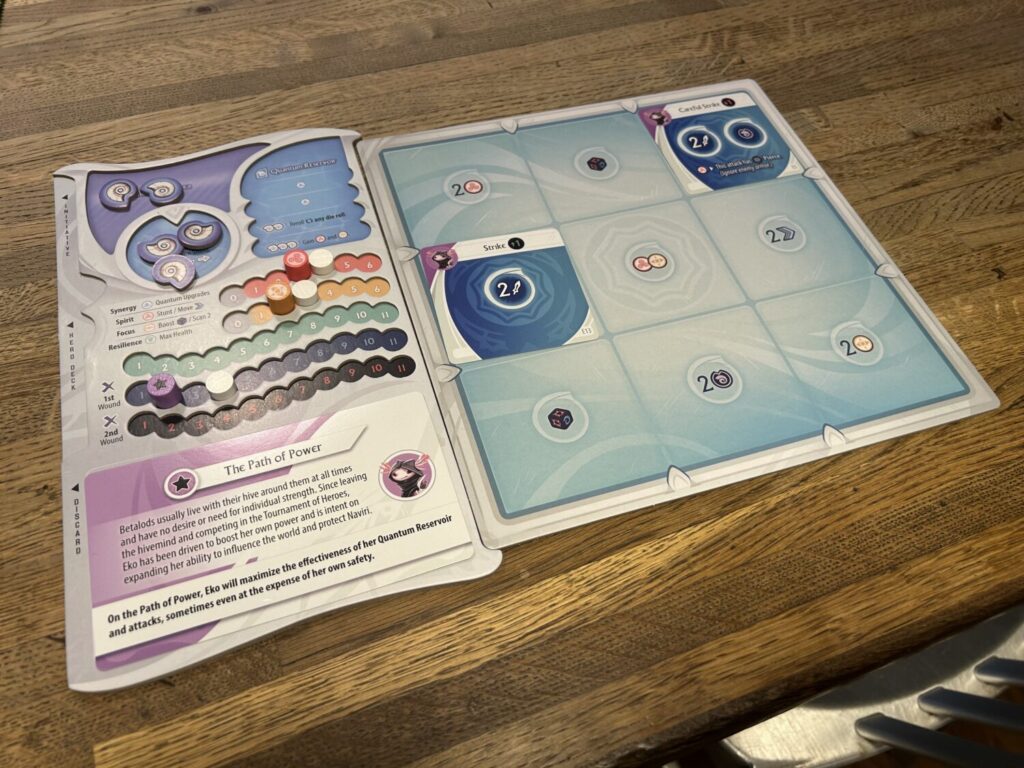
Over the course of the campaign, you unlock upgrades. Each character is given a pair of skill sets to develop as they see fit, which is a lovely way of giving the player a sense of ownership and control. The cards in your deck slowly get upgraded, until eventually you really do feel as a god. This does lead into what may be Tidal Blades 2’s only major issue: it’s a bit easy. But that makes it perfect for family game nights (with kids who fit the box’s listed age of 12+, I would say). The aesthetic of Tidal Blades as a series already nodded in that direction. It makes sense that publisher Druid City Games would choose to embrace it.
One of the things I find most admirable about this design is the variety within its scenarios. Tidal Blades 2 isn’t a hack-and-slash-athon, unlike many dungeon crawlers. There was a moment halfway through the second scenario when we realized that we’d been fighting everyone out of habit. It was entirely unnecessary.
The enemies are controlled by bots, bots that are about as streamlined as it’s possible to be under the circumstances. The process by which they choose a target from multiple options can occasionally get a little sweaty, but it isn’t a huge problem. You spend significantly more time running your own turns than you do the turns of the enemies that populate the board, and that’s what’s important.
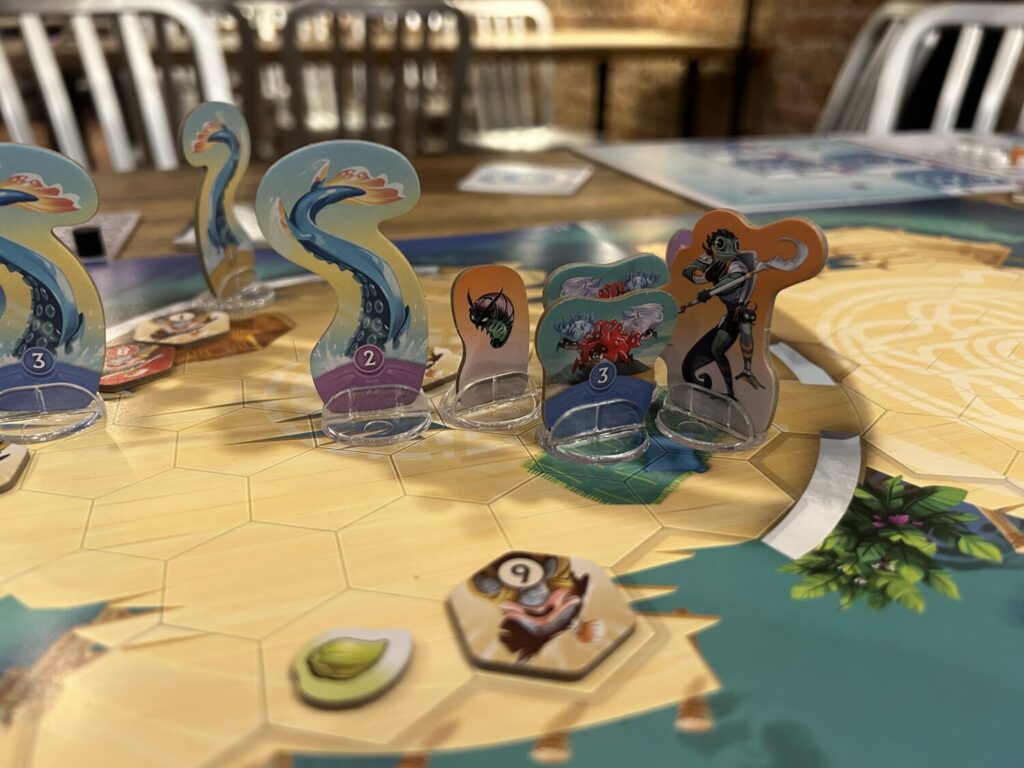
Production Junction
This is a large box, but it earns all that space. The tokens are beautifully printed. The separate map booklets are used to great effect. The cards hold up well to repeated shuffling and handling. This is a production that is so well thought-through that it includes a piece of cardboard to put under the smaller map booklet so it stays level with the other two. That is an attention to detail that you can’t help but appreciate.
That level of care only makes it more confusing that the game didn’t come with anything to organize all the tokens. There are so many. So, so many. I could open a token store and make a fine living off of these tokens. There are hundreds. And nothing with which to organize them. A bizarre choice. Bizarre enough that I wonder if bags were meant to be included and something was wrong with my copy.
If that’s the case, it’s the only thing that was wrong with it. Tim and Ben Eisner have hit it out of the park with Tidal Blades 2: Rise of the Unfolders. It doesn’t achieve the heady heights of Earthborne Rangers, but that’s an impossible standard. This is a wonderful campaign for a more casual audience. Sign me up for Tidal Blades 3, whatever it may be.


